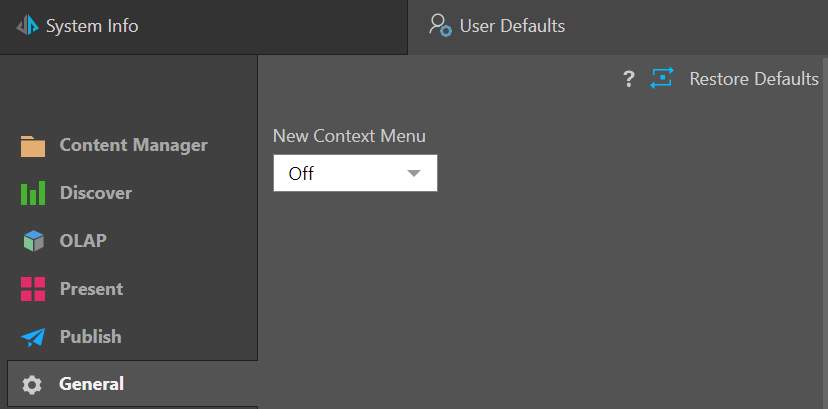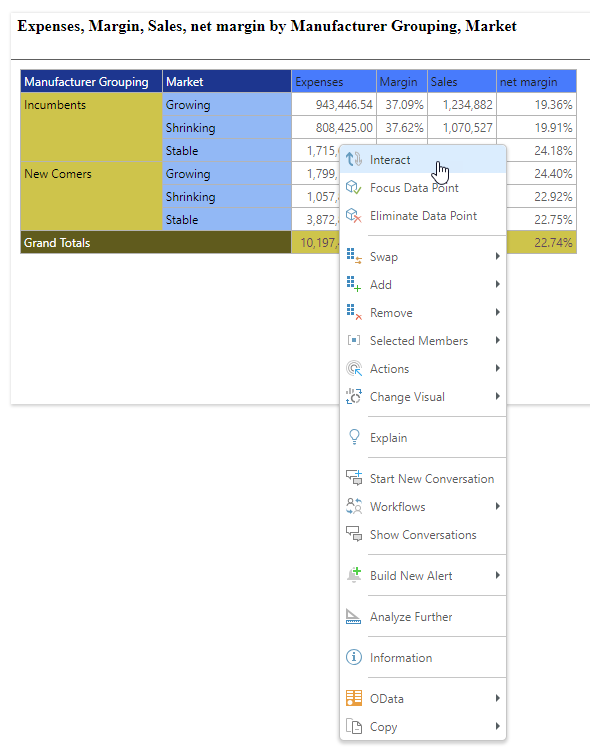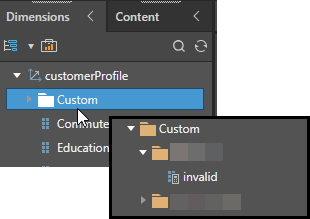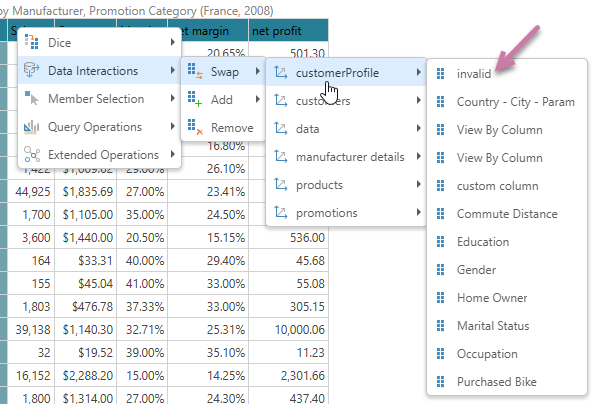The right-click context menus in Discover at design time and in Present at runtime can be collapsed or expanded to make them more convenient for you to use. These menus are configured using two User Default options:
- New Context Menu: Show right-click context menus as compact, multi-level menus, or flat menus.
- Show Context Menu Folder Structure: Show custom folders in the context menu or show the contained items without folders.
- Click here for more information about the runtime context menu in Present
Configuring the Menu Options
You can set your choice for the right-click context menu options in one of the following locations:
- If you are the administrator and wish to set the default for all new users, use the Admin Client's User Defaults.
- If you want to set your own options, overriding the options selected by your administrator, use the User Defaults in either your Discover Settings or in your User Settings.
The two options are available in each of the preceding locations, under the General tab:

New Context Menu
The New context menu option (green arrow above) offers two possible modes for your menus:
- New Context Menu = "On" This is the compact menu, where items are grouped logically as Extended Operations, Data Interactions, and so on. The default for this option is typically "on," which provides a cleaner and more easily readable list of items.
- New Context Menu = "Off" This is the alternative legacy mode, where a flat single list of options is shown on the context menu. This was the default structure at an earlier point in time. All options are the same, they are simply ordered differently.
Note: New installations typically display the new context menu view. Existing installations retain the legacy context menu view (this option is off), so you must explicitly enable the new context menu if that is what you want displayed.
For more information, watch this video:
New Context Menu "On"
When the New Context Menu option is "on," the right-click context menu includes folders that group the right-click options logically:

Note: The preceding image shows the context menu that is shown when a data point in a discovery is right-clicked in Present at runtime. This help file typically uses images of the context menus where the New Context Menu is "On."
New Context Menu "Off"
When the New Context Menu option is off, you'll see the flat, legacy context menu:

Show Context Menu Folder Structure
Where custom entries have been added to your Dimensions, they may be shown in their own Custom folder structure. For example, our customerProfile includes a custom Invalid dimension:

The Show Context Menu Folder Structure menu option (purple arrow above) indicates whether the same custom folder structure should be reflected in your right-click context menu in Discover and Present:
- Show Context Menu Folder Structure = "On" The right-click context menu includes Custom folders seen in the Dimensions panel.
- Show Context Menu Folder Structure = "Off" The right-click context menu excludes Custom folders seen in the Dimensions panel, but does include the dimensions themselves.
The context menus that are affected by this configuration include Dice, Swap, and Add. For more information, see Dice, Add, Swap, and Remove in Discover Pro. If there are numerous attributes and hierarchies, this feature can significantly simplify the user experience.
Folder Structure "On"
When the option is "on," the right-click context menu includes custom display folders for dimensions when using the dice, swap, and add menus.

Folder Structure "Off"
When the option is "off," the right-click context menu is flattened to exclude the Custom folders:
